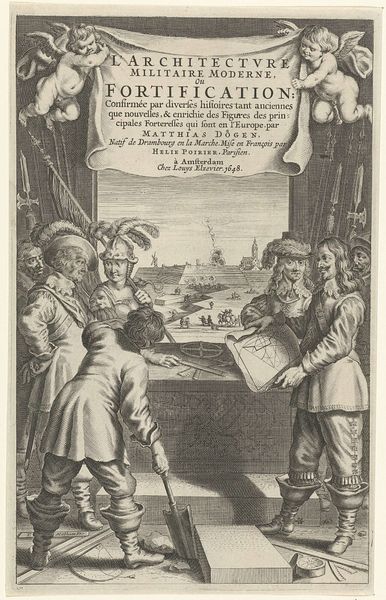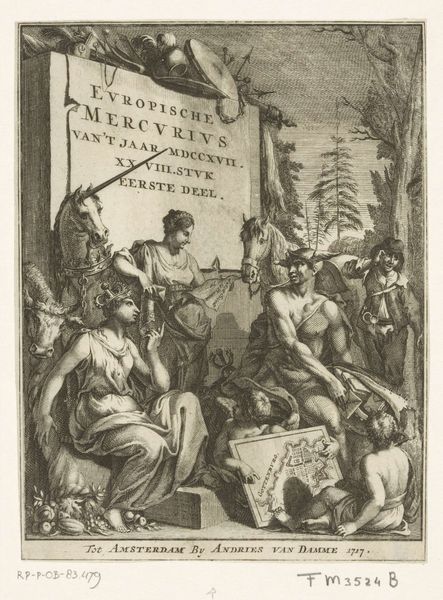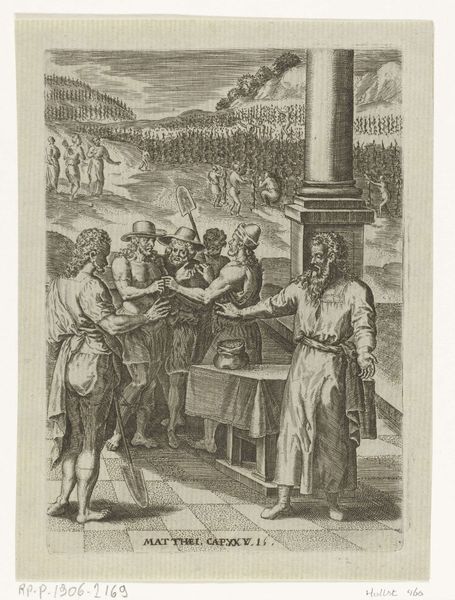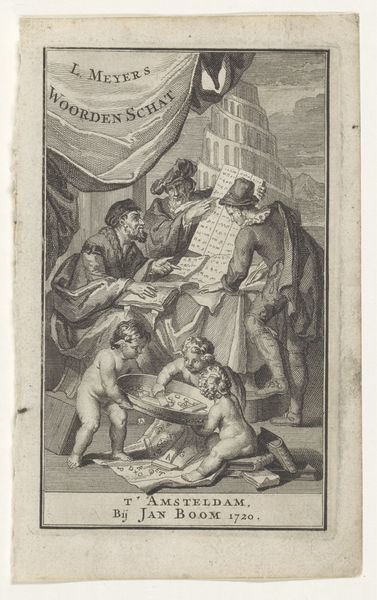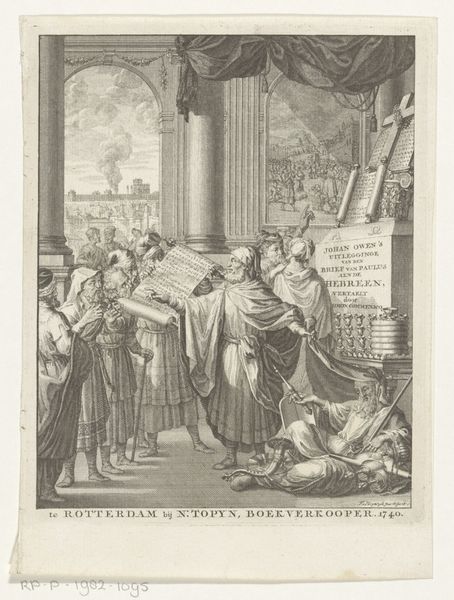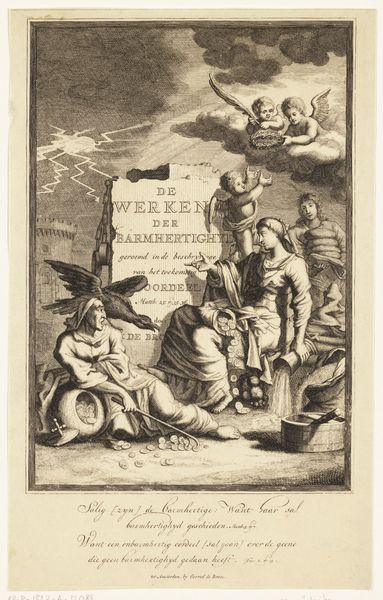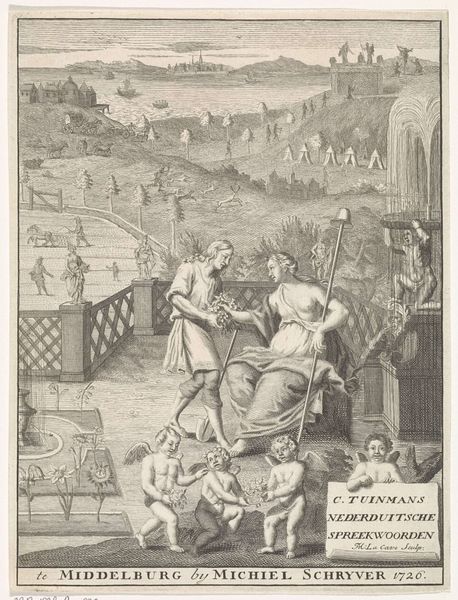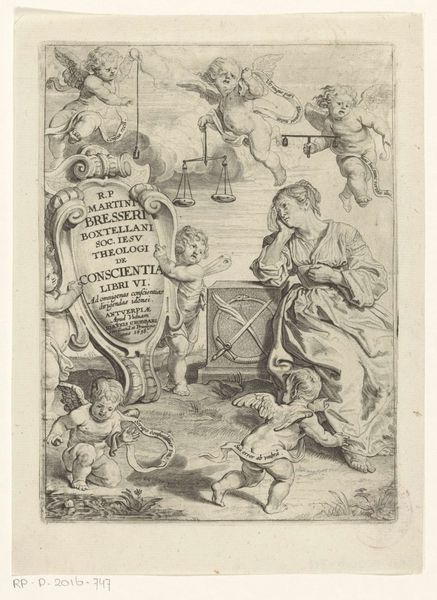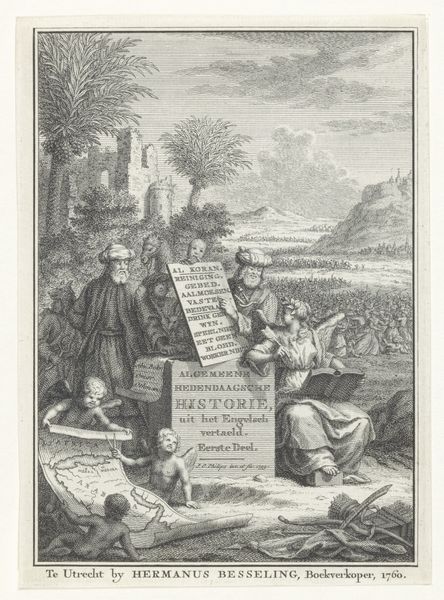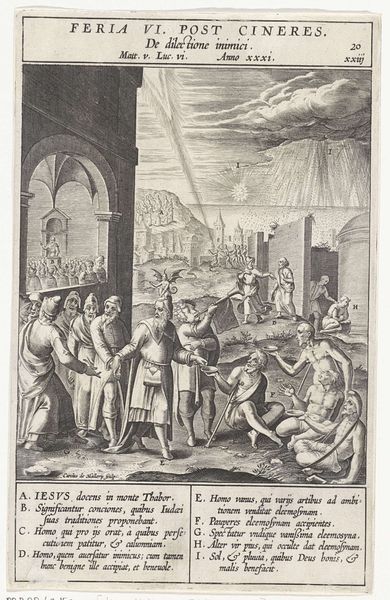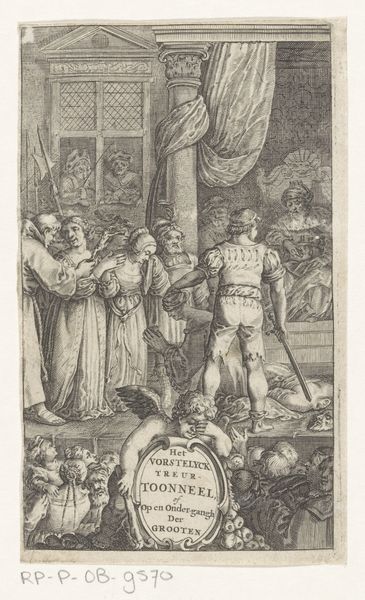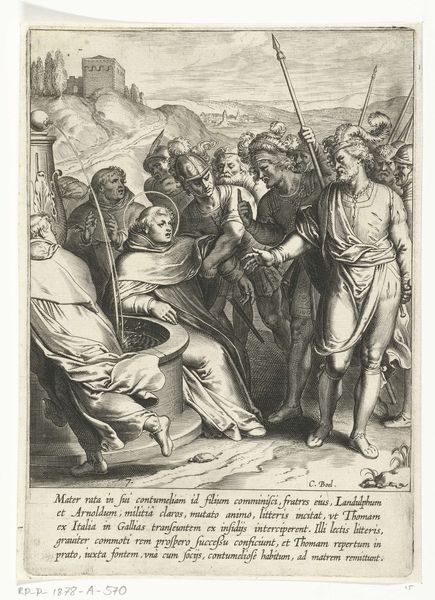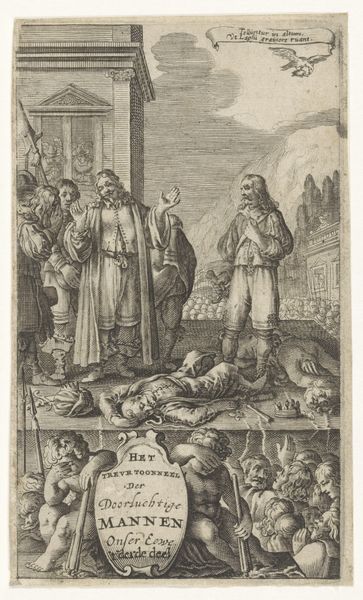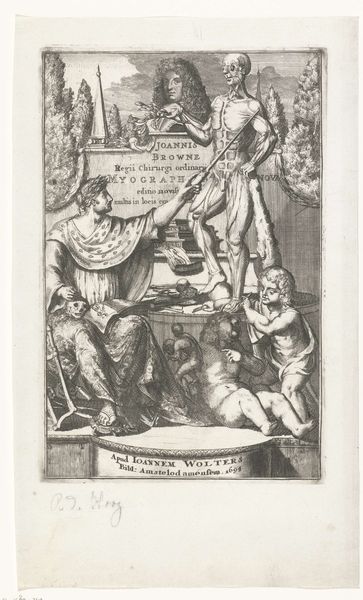
print, engraving
#
narrative-art
#
baroque
# print
#
figuration
#
history-painting
#
academic-art
#
engraving
Dimensions: height 222 mm, width 165 mm
Copyright: Rijks Museum: Open Domain
Curator: We’re standing before "Mannen bekijken kaart van Kanaän," an engraving dating back to 1717. It resides here at the Rijksmuseum. Editor: It strikes me as a very intentional composition, almost theatrical, with the figures clustered together examining something with intensity. Curator: The medium here, engraving, is really central to understanding this work. Consider the labor involved—the meticulous carving into the metal plate, the sheer skill needed to achieve this level of detail in the linework. And then the act of reproduction, pulling multiple prints, made the image widely accessible. Editor: Absolutely. That accessibility speaks volumes. Prints like this helped to solidify and spread specific interpretations of history, in this case, biblical lands. It's not just a historical representation; it’s a politically charged depiction asserting a certain claim to geographical and cultural heritage. Notice how the central figures dominate the scene, a clear visual statement about power and knowledge. Curator: The artist, whose name isn't definitively known but is printed in the upper third on the cartouche with "FRANSOIS HALMA" the print seller from Leeuwarden, translated these biblical narratives into a form that could be consumed and understood within a particular social and economic framework. The Baroque style adds to the sense of grandeur, lending authority to the scene depicted. I’d argue the print's primary function here as an illustrative example to Halma's Geographical Dictionary reinforces this function. Editor: I see the map itself as a tool of colonial imagining, suggesting possession and control through the act of mapping and naming territories. Even in this historical context, we must ask, who gets to define these lands, and whose perspectives are being privileged? I also wonder who produced the geographical entries of this word-book! Curator: Good point. By looking closely at the materials and processes of printmaking, we reveal how seemingly simple images contributed to the shaping and dissemination of ideology. The quality and wide accessibility are the most outstanding part of it. Editor: And considering it in the museum space forces reflection on who gets to tell these stories. Curator: Exactly, art, especially prints like these, never exist in a vacuum, we ought to recall Halma's labor behind producing this artwork and historical moment that made such detailed production viable. Editor: Precisely, understanding its roots and means helps decode its social meanings in the present day, and gives a window into its day.
Comments
No comments
Be the first to comment and join the conversation on the ultimate creative platform.
